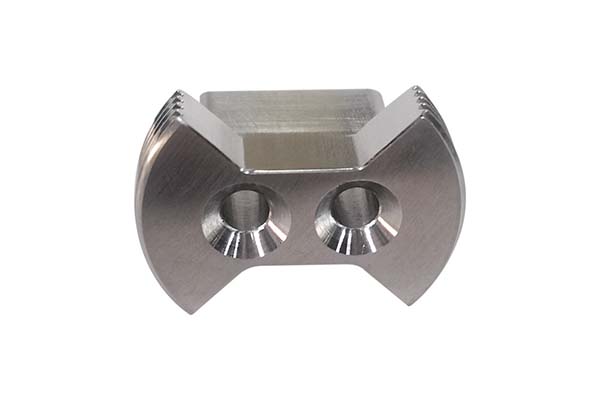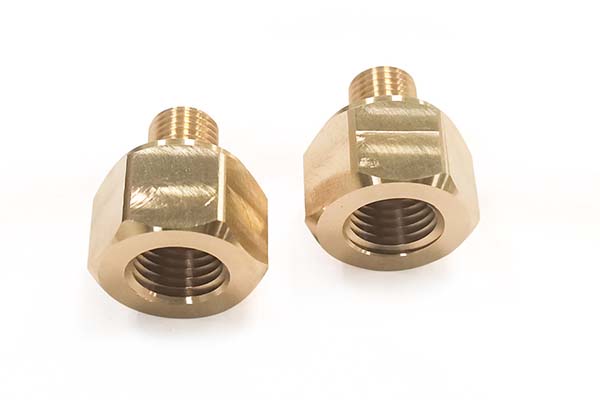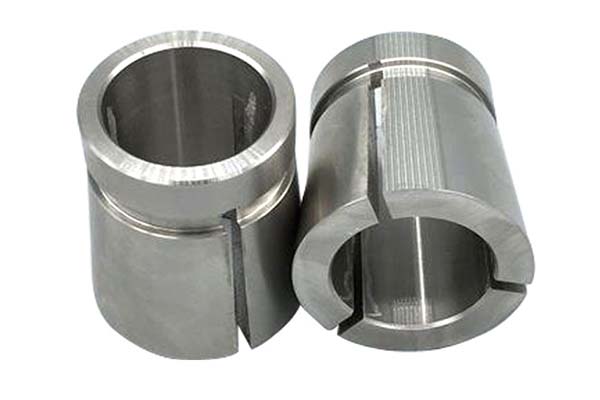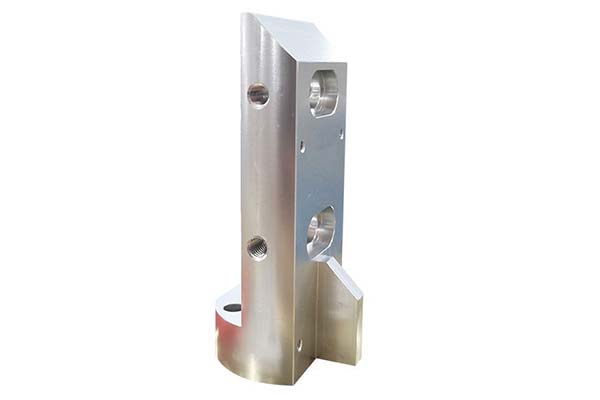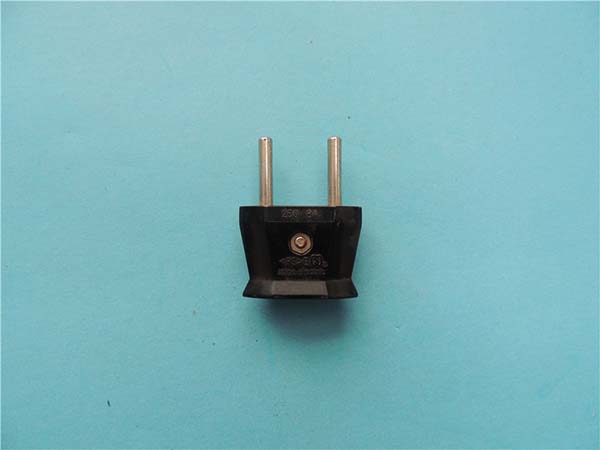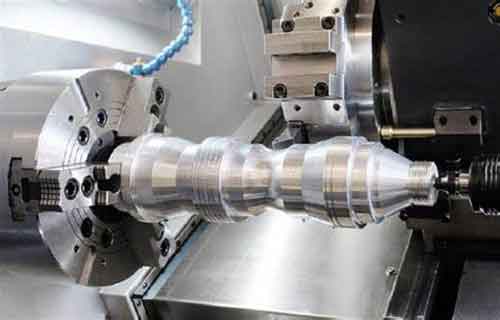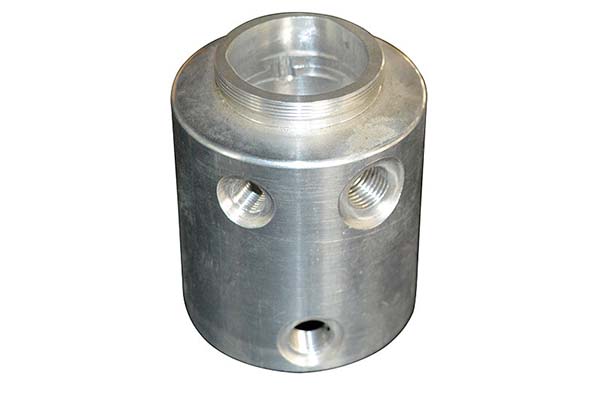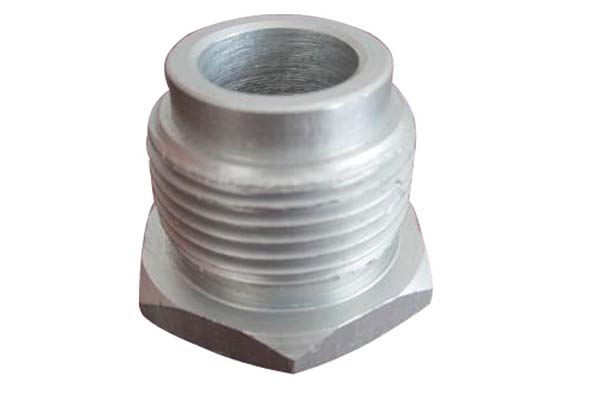Yigu: Milling metals is a cornerstone of manufacturing, but it comes with its fair share of challenges. Many users struggle to choose between climb milling and conventional milling for different materials, leading to poor surface finish or tool wear. Selecting the right cutting tools for tough metals like titanium or nickel - based alloys can be a guessing game, and setting optimal milling parameters (such as cutting speed and feed rate) often feels like trial and error. In this comprehensive guide, we’ll tackle these pain points and provide detailed insights into every aspect of milling metals.
Milling Processes: Choosing the Right Approach
Basic Milling Methods
Conventional milling (also known as up milling) and climb milling (down milling) are the two primary milling processes, differing in the direction of the cutter rotation relative to the workpiece feed. In conventional milling, the cutter rotates against the feed direction, creating a rubbing action at the start of the cut that can cause poor surface finish and increased tool wear. Climb milling, on the other hand, has the cutter rotating with the feed direction, resulting in a smoother cut, less tool wear, and better surface finish. For example, when milling aluminum, climb milling can reduce tool wear by 30 - 40% compared to conventional milling.
Face milling is used to create flat surfaces on the workpiece. A face mill with multiple cutting inserts is typically used, and it can achieve a surface roughness (Ra value) as low as 1.6 μm on steel. End milling uses an end mill to create features like slots, pockets, and contours. It’s versatile and can be used for both 2D and 3D machining operations.
Specialized Milling Processes
High - speed milling is a game - changer for productivity. It uses high spindle speeds (10,000 - 60,000 RPM) and fast feed rates, reducing machining time by 50 - 70% compared to conventional milling. For instance, high - speed milling of a 50mm x 50mm steel block with a 10mm end mill can be completed in 2 minutes at 30,000 RPM, whereas conventional milling at 5,000 RPM might take 5 - 6 minutes.
Profile milling creates complex 2D or 3D contours, essential for parts like aerospace components with curved surfaces. Step milling is used to create 台阶状 features, with each step having a specific depth and width. Gang milling involves using multiple cutters mounted on a single arbor to perform several operations simultaneously, ideal for mass production of parts with multiple features.
Metal Materials: Understanding Their Milling Characteristics
Common Metals and Their Properties
Aluminum is one of the easiest metals to mill, thanks to its low hardness (60 - 100 HB) and high machinability. It can be milled at high speeds, with a cutting speed of 100 - 300 m/min using carbide tools. Steel is more challenging, with carbon steel having a hardness of 150 - 250 HB and requiring cutting speeds of 50 - 150 m/min.
Stainless steel is known for its toughness and corrosion resistance, but it’s also work - hardening, which can cause tool wear. A cutting speed of 30 - 100 m/min is recommended for stainless steel, along with sharp tools to minimize work hardening. Titanium is a high - strength, low - weight metal used in aerospace, but its low thermal conductivity causes heat to build up in the cutting zone, requiring cutting speeds as low as 10 - 30 m/min and plenty of coolant.
Challenging Metals
Nickel - based alloys (such as Inconel) are used in high - temperature applications, but they are very difficult to mill. They have high strength at elevated temperatures and cause significant tool wear, with cutting speeds often limited to 5 - 20 m/min. Cast iron is brittle, which can make chip control easier, but its abrasive nature wears down tools quickly. Using ceramic tools can extend tool life when milling cast iron, with cutting speeds of 200 - 400 m/min possible.
Milling Machines: Selecting the Right Tool for the Job
Types of Milling Machines
Vertical milling machines have the spindle oriented vertically, making them ideal for face milling, end milling, and die sinking. They are compact and versatile, suitable for small to medium - sized workpieces. Horizontal milling machines have a horizontal spindle and are better for heavy - duty milling, such as gang milling and cutting deep slots.
CNC milling machines have revolutionized metal milling with their precision and automation. They can perform complex operations with minimal human intervention, achieving tolerances of ±0.001 mm. A 3 - axis CNC mill is sufficient for most 2.5D parts, while 5 - axis CNC mills can handle complex 3D shapes, such as turbine blades. Manual milling machines are still used for small - batch production and prototyping, but they rely on the operator’s skill for precision.
Special - Purpose Machines
Portal milling machines are large, heavy - duty machines used for milling large workpieces, such as machine beds and structural components. They have a gantry - style structure that allows the cutter to move over the workpiece. Universal milling machines can swivel the table, enabling the milling of angles and complex shapes, making them useful for tool and die making.
Cutting Tools: The Key to Successful Milling
Types of Cutting Tools
End mills are the most versatile cutting tools, with flutes that run the length of the tool. They come in various sizes and flute counts, with 2 - flute end mills suitable for aluminum and 4 - flute end mills better for steel. Face mills are used for face milling, with multiple cutting inserts that can be replaced when worn.
Carbide tools are harder and more wear - resistant than high - speed steel tools, making them suitable for high - speed milling and tough materials. They can withstand higher temperatures, with a maximum operating temperature of around 1000°C, compared to 600°C for high - speed steel. Coated tools (such as TiN, TiAlN, and AlTiN coatings) further improve tool life by reducing friction and wear. For example, an AlTiN - coated carbide end mill can last 2 - 3 times longer than an uncoated one when milling stainless steel.
Tool Selection Tips
When selecting a cutting tool, consider the material being milled, the milling process, and the desired surface finish. For high - speed milling of aluminum, a carbide end mill with a polished flute surface to prevent chip welding is a good choice. For milling titanium, a cobalt - coated carbide tool with a sharp cutting edge and positive rake angle helps reduce cutting forces and heat.
Milling Parameters: Optimizing for Performance
Key Parameters
Cutting speed (in m/min) is the speed at which the cutting edge moves relative to the workpiece. It depends on the material and the tool material. For example, carbide tools can handle higher cutting speeds than high - speed steel tools when milling the same material. Feed rate (in mm/min) is the speed at which the workpiece moves relative to the tool, and it’s calculated by multiplying the chip load (mm per tooth) by the number of teeth on the tool and the spindle speed (RPM).
Depth of cut is the distance the tool penetrates into the workpiece in the z - axis, and width of cut is the amount of the tool’s diameter that is engaged with the workpiece. A general rule is to use a depth of cut equal to the tool diameter for roughing operations and a smaller depth (0.1 - 0.5 mm) for finishing. Tool overhang should be minimized to reduce tool deflection, which can affect surface finish and dimensional accuracy.
Parameter Optimization
The table below shows recommended milling parameters for common metals using carbide tools:
| Metal | Cutting Speed (m/min) | Feed Rate (mm/min) | Depth of Cut (mm) | Spindle Speed (RPM) for 10mm Tool |
| Aluminum | 100 - 300 | 500 - 2000 | 1 - 5 | 3180 - 9550 |
| Steel | 50 - 150 | 200 - 1000 | 0.5 - 3 | 1590 - 4770 |
| Stainless steel | 30 - 100 | 100 - 500 | 0.3 - 2 | 955 - 3180 |
| Titanium | 10 - 30 | 50 - 200 | 0.2 - 1 | 318 - 955 |
Surface Finish: Achieving the Desired Quality
Measuring Surface Finish
Surface roughness is measured using a profilometer, which gives an Ra value (arithmetic mean deviation of the surface). For most engineering applications, an Ra value of 1.6 - 6.3 μm is acceptable, but precision parts may require Ra values as low as 0.025 μm. Surface texture refers to the pattern of peaks and valleys on the surface, which is influenced by the milling parameters and tool geometry.
Surface flatness is important for parts that need to mate with other components, with tolerances ranging from ±0.01 mm/m for precision machine beds to ±0.1 mm/m for less critical parts. Surface defects (such as cracks, burrs, and scratches) can weaken the part and affect its performance, so it’s essential to inspect the surface after milling.
Improving Surface Finish
To achieve a good surface finish, use a high feed rate and low depth of cut for finishing passes. A step - over distance (the distance between consecutive tool paths) of 10 - 20% of the tool diameter helps create a smooth surface. Using sharp tools and adequate coolant also reduces surface roughness by minimizing friction and heat - induced damage.
Applications of Milling: Where It’s Used
Industrial Applications
The automotive industry relies heavily on milling for producing engine blocks, cylinder heads, and transmission parts. CNC milling machines can produce these parts with high precision and repeatability, ensuring they meet strict quality standards. In the aerospace industry, milling is used to create lightweight, high - strength components from titanium and aluminum alloys, such as wing spars and fuselage parts.
The medical equipment manufacturing sector uses milling to produce surgical instruments and implant components, which require high precision and biocompatibility. Tool and die making depends on milling to create molds and dies for plastic injection molding and metal stamping.
Other Applications
Prototyping is made easier with milling, as it allows for quick production of functional prototypes from metal. Custom machining shops use milling to create one - of - a - kind parts for various industries. In research and development, milling is used to fabricate experimental parts and components.
Milling Techniques: Advanced Methods for Better Results
Specialized Techniques
Thread milling is used to create internal and external threads, offering advantages over tapping, such as the ability to thread holes with interrupted cuts and the use of a single tool for different thread sizes. Gear milling produces gears using specialized cutters, with hob milling being the most common method for large - scale gear production.
Adaptive milling is a modern technique that uses real - time feedback to adjust the cutting parameters based on the material’s properties and the tool’s condition. It optimizes cutting forces, reduces tool wear, and improves surface finish, making it ideal for machining complex parts with varying material hardness.
Helical milling creates holes by moving the tool in a helical path, eliminating the need for center drills and reducing the risk of tool breakage. It’s especially useful for drilling large holes in tough materials.
Yigu Technology, as a plastic metal parts custom manufacturing Supplier, recognizes the importance of precise metal milling in producing high - quality components. We utilize advanced CNC milling machines and select the right cutting tools and parameters for each metal material, ensuring optimal performance and surface finish. Our expertise in various milling techniques allows us to meet the diverse needs of industries such as automotive and electronics, delivering reliable and cost - effective solutions.
FAQ
- What is the difference between climb milling and conventional milling?
- In climb milling, the cutter rotates with the workpiece feed direction, resulting in a smoother cut, less tool wear, and better surface finish. Conventional milling has the cutter rotating against the feed direction, which can cause more tool wear and a rougher surface, but it’s safer for machines with backlash in the feed screws.
- How do I choose the right cutting tool for milling stainless steel?
- Select a carbide tool with a sharp cutting edge and a positive rake angle to minimize work hardening. Coated tools (such as AlTiN) are recommended to reduce friction and tool wear. A 4 - flute end mill is a good choice for better chip evacuation, and the tool should have a high - helix angle to clear chips effectively.
- What are the benefits of high - speed milling?
- High - speed milling increases productivity by reducing machining time, improves surface finish (due to smaller chip loads), and reduces heat transfer to the workpiece (minimizing thermal distortion). It also allows for the machining of complex shapes with tight tolerances, making it suitable for high - precision applications in aerospace and medical industries.
